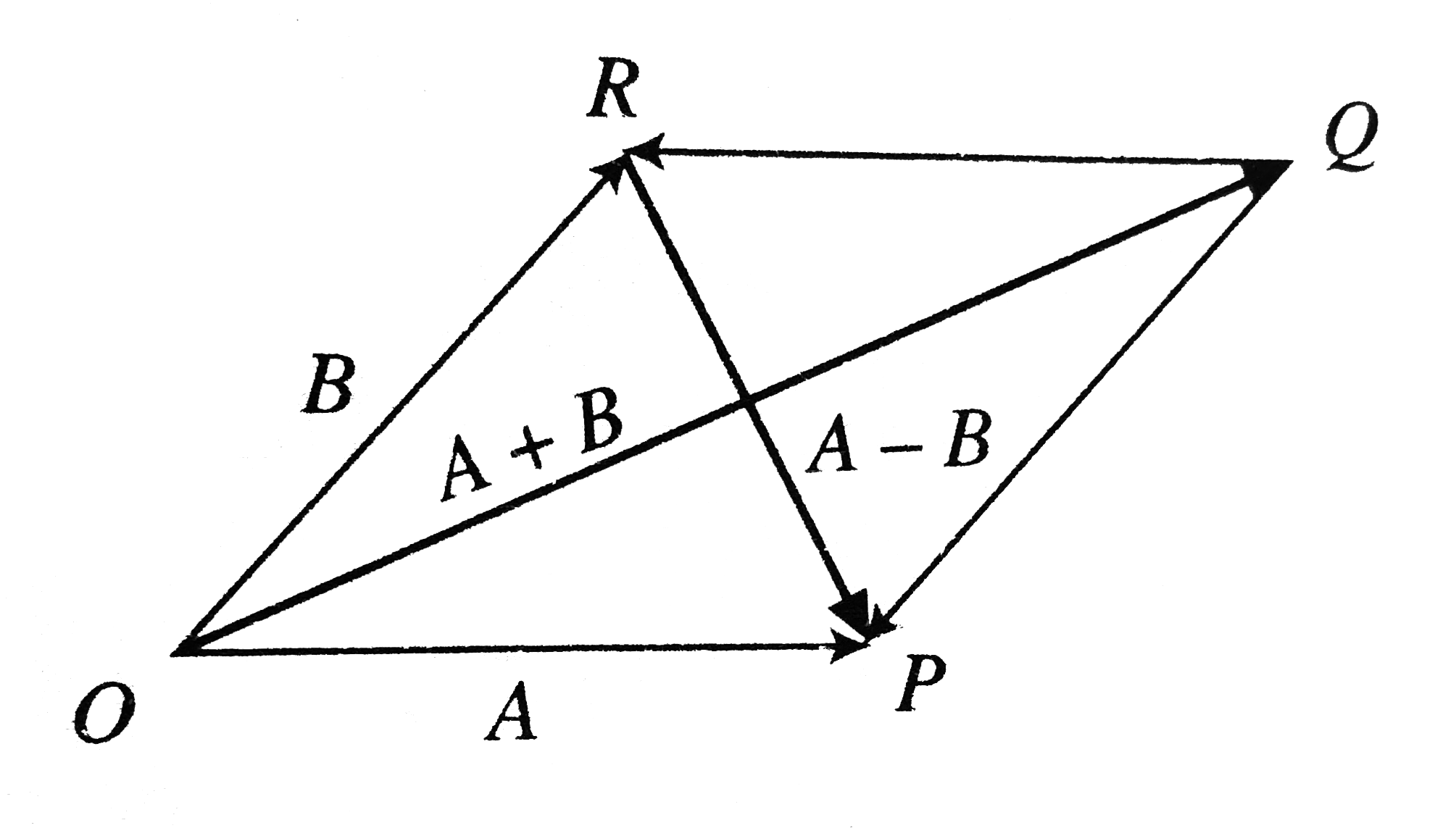By vector method, prove that if the diagonals of a parallelogram intersect perpendicularly,then the parallelogram is rombus.
Video Solution
Text Solution
Assuming the sides of a paralleogram as −−→OP=→A, and −−→OR=→B,
its diagonals can be given as −−→OQ=→A+→B and −−→RP=→A−→B,
respectively.

Since −−→OQ⊥−−→RP,−−→OQ.−−→RP=0, substituting OQ=→A+→Band
RP=→A−→B,we have (→A+→B).(→A−→B)=0.
This gives →A.→A−→A.→B+→B.→A−→B.→B=0
since →A.→A−∣∣→A∣∣2,→B+→B=∣∣→B∣∣2, and →A.→B=→B.→A, we have
∣∣→A∣∣2−∣∣→B∣∣20. Hence , ∣∣→A∣∣=∣∣→B∣∣. It means that OP=OR.
This tells us that the given parallelogram is a rombus.
|
Topper's Solved these Questions
- VECTORSBOOK - CENGAGE PHYSICSCHAPTER - VECTORSEXERCISE - Exercise 3.1
19 Videos
- VECTORSBOOK - CENGAGE PHYSICSCHAPTER - VECTORSEXERCISE - Exercise 3.2
13 Videos
- TRAVELLING WAVESBOOK - CENGAGE PHYSICSCHAPTER - TRAVELLING WAVESEXERCISE - Integer
9 Videos
- WORK, POWER & ENERGYBOOK - CENGAGE PHYSICSCHAPTER - WORK, POWER & ENERGYEXERCISE - Archives (integer)
4 Videos
Similar Questions
Knowledge Check
Diagonals of a parallelogram PQRS must be a
ArectangleBsquareCcyclic quadrilateralDrhombus
If the diagonals of a parallelogram are perpendicular, then it is a rhombus.
View SolutionProve by vector method that the diagonals of a parallelogram bisect each other.
View SolutionThe diagonals of a parallelogram bisect each other.
View SolutionThe diagonals of a parallelogram bisect each other.
View SolutionIf the diagonals of a parallelogram are equal and intersect at right angles, then the parallelogram is a square.
View SolutionIf the diagonals of a parallelogram are equal, then it is a
View SolutionThe diagonals of a parallelogram are not perpendicular. Is it a rhombus? Why or why not?
View Solution
